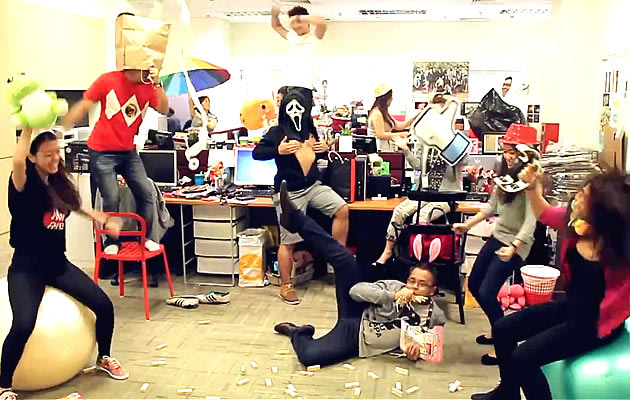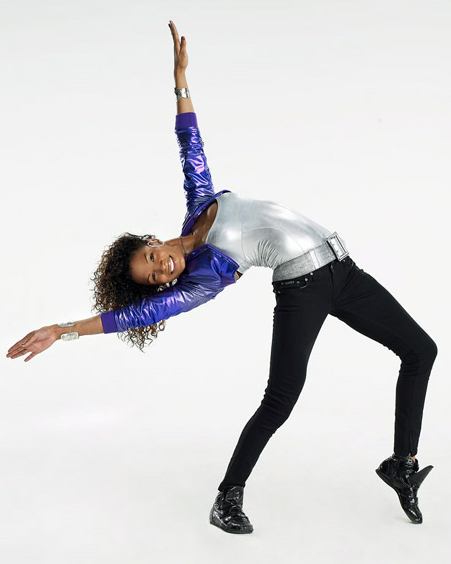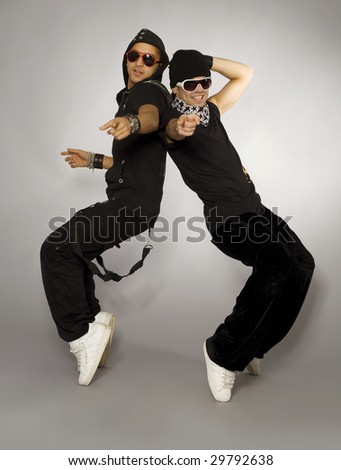Modern
dance is a term usually referring to 20th-century
concert dance,
although it has also been applied to a category of 20th-century ballroom dances. Modern dance refused classical ballet's
stress on feet as the primary catalyst for dance movements. It, instead, put stress on torso employing such elements as
contact-release, floor work, fall and recovery, and improvisation. It was usually performed in bare feet,
often with non-traditional costuming.
Predecessors
Isadora Duncan, born in San Francisco in 1877, was a predecessor of modern
dance with her stress on the torso movements, bare feet, loose hair,
free-flowing costumes, and incorporation of humor into emotional
expression. She was inspired by classical Greek arts, folk dances,
social dances, nature, natural forces, and new American athleticism such as
skipping, running, jumping, leaping, and abrupt movements. She thought that ballet was
ugly and meaningless gymnastics. Although she returned to the United States at
various points in her life. Her work was not very well received there. She
returned to Europe and died in Paris in 1927.
Free
dance
·
1891: Loie Fuller (a burlesque skirt
dancer) began experimenting with the effect that gas lighting had on her silk
costumes. Fuller developed a form of natural movement and improvisation
techniques that were used in conjunction with her revolutionary lighting
equipment and translucent silk costumes. She patented her apparatus and methods
of stage lighting that included the use of coloured gels and burning chemicals
for luminescence, and also patented her voluminous silk stage costumes.
·
1905: Ruth St. Denis, influenced by the actor Sarah Bernhardt and Japanese dancer Sada Yacco, developed her translations ofIndian culture and mythology. Her performances quickly became
popular and she toured extensively while researching Orientalculture and arts.
Expressionist
and early modern dance in Europe
In Europe, Mary Wigman, Francois Delsarte, Émile
Jaques-Dalcroze, and Rudolf von Laban developed theories of human movement
and expression, and methods of instruction that led to the development of
European modern and Expressionist dance.
·
Émile
Jaques-Dalcroze (Eurhythmics)
·
Rudolf Laban
·
Kurt Jooss
·
Mary Wigman
·
Harald Kreutzberg
Radical
dance
Disturbed by the Great Depression and the rising threat of fascism in
Europe, the radical dancers tried to raise consciousness by dramatizing the economic, social, ethnic and political crises
of their time.
·
Hanya Holm, a
student of Mary Wigman and instructor at the Wigman School in Dresden, founded the New York Wigman School
of Dance in 1931 (which became the Hanya Holm Studio in 1936) introducing
Wigman technique, Laban's theories
of spatial dynamics, and later her own dance techniques to American modern
dance. An accomplished choreographer, she was a founding artist of the first American Dance
Festival in Bennington
(1934). Holm's dance work Metropolitan
Daily was the first modern
dance composition to be televised on NBC and her labanotation score for Kiss Me, Kate (1948) was the first choreography to becopyrighted in the United States. Holm choreographed
extensively in the fields of concert dance and musical theater.
·
Anna Sokolow—A
student of Martha Graham and Louis Horst, Sokolow created her own dance company
(circa 1930). Presenting dramatic contemporary imagery, Sokolow's compositions
were generally abstract, often revealing the full spectrum of human experience
reflecting the tension and alienation of the time and the truth of human movement.
·
José Limón—In 1946, after studying and
performing with Doris Humphrey and Charles Weidman, Limón established his own
company with Humphrey as artistic director. It was under her mentorship that
Limón created his signature dance The
Moor’s Pavane (1949). Limón’s
choreographic works and technique remain a strong influence on contemporary
dance practice.
·
Merce Cunningham—A former ballet student
and performer with Martha Graham, he presented his first New York solo concert
withJohn Cage in
1944. Influenced by Cage and embracing modernist ideology using postmodern processes, Cunningham introducedchance
procedures and pure movement to choreography and Cunningham technique to the cannon of 20th-century dance
techniques. Cunningham set the seeds for postmodern dance with his non-linear, non-climactic,
non-psychological abstract work. In these works each element is in and of
itself expressive, and the observer (in large part) determines what it
communicates.
·
Erick Hawkins—A
student of George Balanchine, Hawkins became a soloist
and the first male dancer in Martha Graham's dance company. In 1951, Hawkins,
interested in the new field of kinesiology, opened his own school and
developed his own technique (Hawkins technique) a forerunner of most somatic
dance techniques.
·
Paul Taylor—A
student of the Juilliard School of Music and the Connecticut College School of Dance. In 1952 his
performance at the American Dance
Festival attracted the
attention of several major choreographers. Performing in the companies of Merce Cunningham, Martha Graham, and George Balanchine (in that order), he founded the Paul Taylor
Dance Company in 1954.
The use of everyday gestures and modernist ideology is
characteristic of his choreography. Former members of the Paul Taylor Dance
Company included Twyla Tharp, Laura Dean, Dan Wagoner, and
Senta Driver.
·
Alwin Nikolais—A student of Hanya Holm. Nikolais's use of multimedia in
works such as Masks, Props,
and Mobiles (1953), Totem(1960), and Count Down (1979) was unmatched by other
choreographers. Often presenting his dancers in constrictive spaces and
costumes with complicated sound and sets, he focused their attention on the
physical tasks of overcoming obstacles he placed in their way. Nikolais viewed
the dancer not as an artist of self-expression, but as a talent who could
investigate the properties of physical space and movement.
Popularization in America
In 1927,
newspapers regularly began assigning dance critics, such as Walter Terry, and Edwin Denby,
who approached performances from the viewpoint of a movement specialist rather
than as a reviewer of music or drama. Educators accepted modern dance into
college and university curricula, first as a part of physical education, then
as performing art. Many college teachers were trained at the Bennington Summer
School of the Dance, which was established at Bennington
College in 1934.
Of the Bennington program, Agnes de Mille wrote,
"...there was a fine commingling of all kinds of artists, musicians, and
designers, and secondly, because all those responsible for booking the college
concert series across the continent were assembled there. ... free from the
limiting strictures of the three big monopolistic managements, who pressed for
preference of their European clients. As a consequence, for the first time
American dancers were hired to tour America nationwide, and this marked the
beginning of their solvency." (de Mille, 1991, p. 205)
Legacy of Modern
Dance
The legacy of
modern dance can be seen in lineage of 20th-century
concert dance forms.
Although often producing divergent dance forms, many seminal dance artists
share a common heritage that can be traced back to free dance.
Postmodern dance
Postmodern dance occurred in the 1960s in United States
when society questioned truths and ideologies in politics and art.
This period was marked by social and cultural experimentation in the arts. Choreographers no longer
created specific 'schools' or 'styles'. The influences from different periods
of dance became more vague and fragmented.
Contemporary dance
Contemporary dance
emerged in the 1950s as the dance form that is combining the modern dance
elements and the classical ballet elements. It can use elements from non-Western
dance cultures, such as African dancing with bent knees as a characteristic
trait, and Butoh, Japanese contemporary dancing that developed in the 1950s. It is also derived from modern
European themes like poetic and everyday elements, broken lines, nonlinear
movements, and repetition. Many contemporary dancers are trained daily in
classical ballet to keep up with the technicality of the choreography given.
These dancers tend to follow ideas of efficient bodily movement, taking up
space, and attention to detail. Contemporary dance today includes both concert
and commercial dance because of the lines being blurred by pop culture and
television shows
















